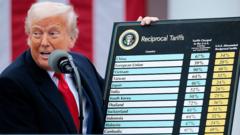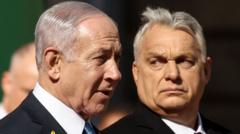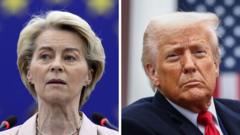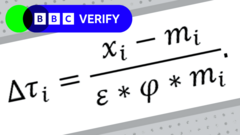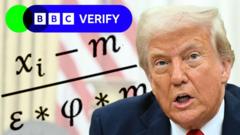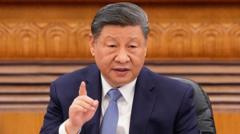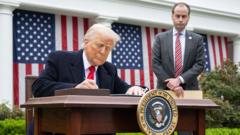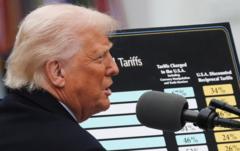Taiwanese President Lai Ching-te's visit to Hawaii has escalated already heightened tensions between Taiwan and China, with Beijing issuing strong denunciations and protests against the trip.
Taiwan's President Visits Hawaii, Provoking Outrage from China

Taiwan's President Visits Hawaii, Provoking Outrage from China
Taiwan's leader's diplomatic tour sparks tensions amid U.S.-China relations.
Taiwanese President Lai Ching-te has arrived in Hawaii for a two-day visit, a move that has elicited intense backlash from China. Promoted as a strategic stopover in his Pacific tour, the visit aligns with escalating tensions between the U.S. and China concerning Taiwan's sovereignty. After his arrival, Lai emphasized the futility of war, stating there are “no winners” and urged a united effort to prevent it.
China's foreign ministry condemned Lai's visit, lodging serious protests with the United States, reinforcing its stance that Taiwan is a part of its territory. The backdrop of this visit is a long-standing historical conflict, traceable to Taiwan’s separation from mainland China in 1949 following the Chinese Civil War. The U.S. maintains a careful, ambiguous policy towards Taiwan—avoiding the outright recognition of its independence while fostering unofficial relations.
Before departing for Hawaii, Lai described the trip as the commencement of “a new era of value-based diplomacy”, underlining Taiwan's role as a beacon for democracy and stability in global affairs. Highlighting aspirations for peace, he remarked at a dinner attended by U.S. officials and Taiwanese expatriates in Hawaii that his visit to Pearl Harbour served to underscore the necessity of peace amidst historical adversities.
Lai plans to extend his tour to regional allies, including the Marshall Islands, Tuvalu, Palau, and a brief stop in Guam, which represent the few Pacific nations acknowledging Taiwan's sovereignty. In a stern reaction prior to Lai's departure, a spokesperson for China's defense ministry emphasized China’s strong opposition to any form of official engagement with Taiwan, vowing to thwart attempts at Taiwanese independence.
China's foreign ministry condemned Lai's visit, lodging serious protests with the United States, reinforcing its stance that Taiwan is a part of its territory. The backdrop of this visit is a long-standing historical conflict, traceable to Taiwan’s separation from mainland China in 1949 following the Chinese Civil War. The U.S. maintains a careful, ambiguous policy towards Taiwan—avoiding the outright recognition of its independence while fostering unofficial relations.
Before departing for Hawaii, Lai described the trip as the commencement of “a new era of value-based diplomacy”, underlining Taiwan's role as a beacon for democracy and stability in global affairs. Highlighting aspirations for peace, he remarked at a dinner attended by U.S. officials and Taiwanese expatriates in Hawaii that his visit to Pearl Harbour served to underscore the necessity of peace amidst historical adversities.
Lai plans to extend his tour to regional allies, including the Marshall Islands, Tuvalu, Palau, and a brief stop in Guam, which represent the few Pacific nations acknowledging Taiwan's sovereignty. In a stern reaction prior to Lai's departure, a spokesperson for China's defense ministry emphasized China’s strong opposition to any form of official engagement with Taiwan, vowing to thwart attempts at Taiwanese independence.





